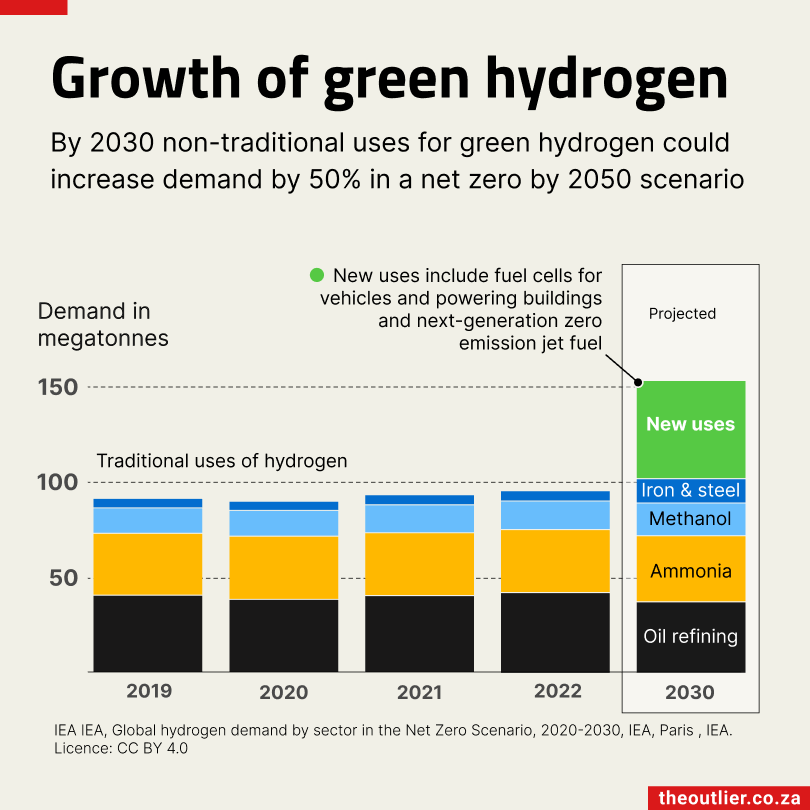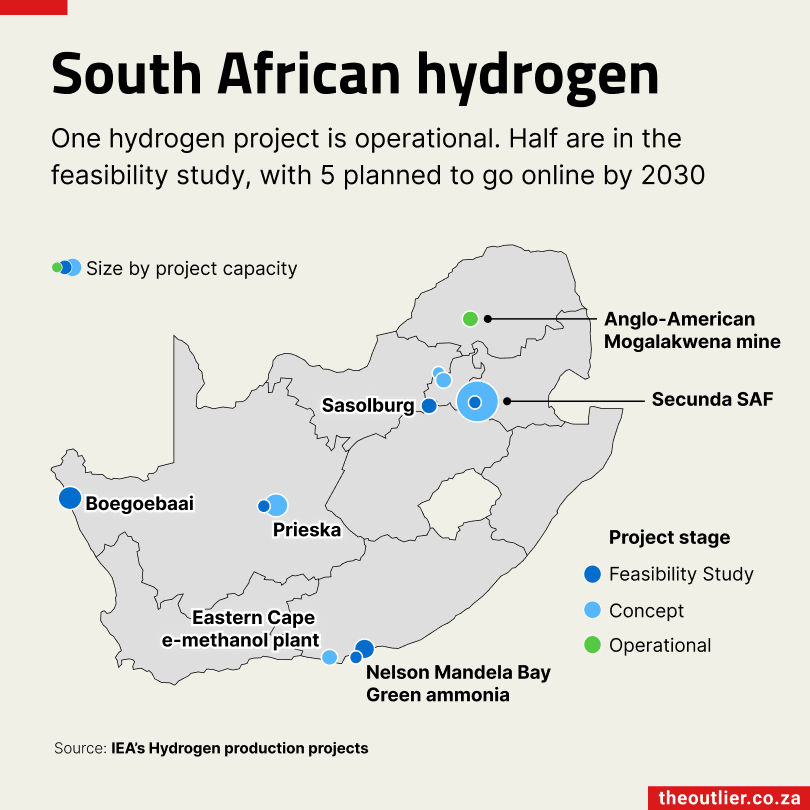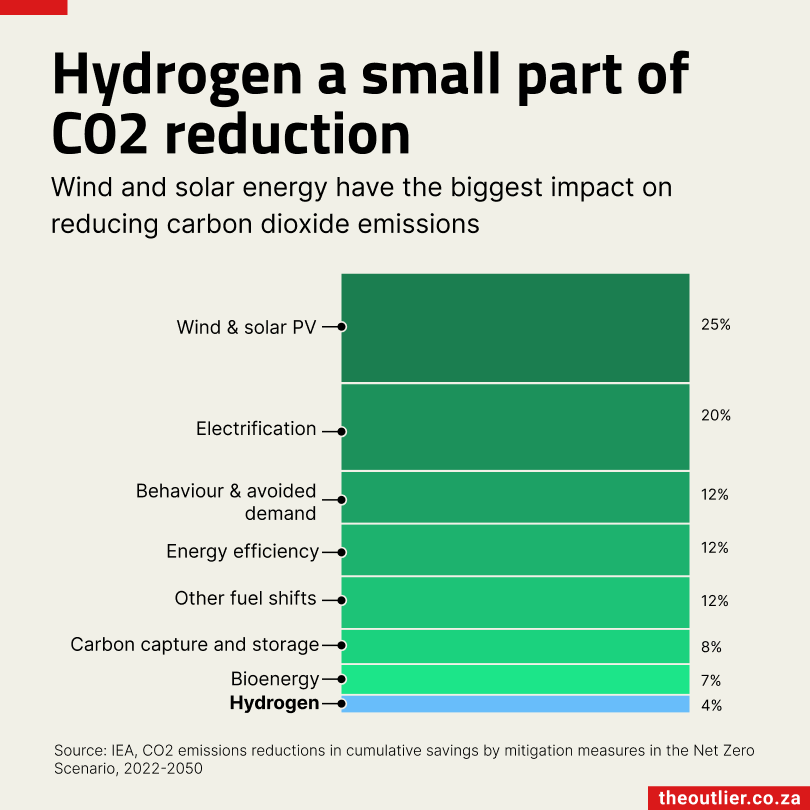South Africa poised to strike gold with green hydrogen
Green hydrogen could have a transformative effect on South Africa: it could be used to clean up domestic industries and its export could add billions to the GDP.
Expert opinion is mixed about the central role hydrogen will play in curbing global warming, but South Africa looks set to become a much bigger player in the global hydrogen market, which will bring billions of dollars into the fiscus.
Today 99.9% of hydrogen is extracted from fossil fuels, usually gas. It is used mostly for refining oil and making industrial chemicals such as ammonia (used in fertilisers, solvents, explosives) and methane (used in plastics).
New green hydrogen is made using solar and wind power to perform water electrolysis, resulting in the creation of environmentally friendly hydrogen fuel. It will be used more widely, including in fuel cells for cars, for powering buildings and even as next-generation zero-emission jet fuel. Green hydrogen is carbon neutral to produce, and it emits only harmless water vapour when used.

Away game
South Africa has ambitious plans to produce green hydrogen on a massive scale, and figures on exporting to countries that have aggressive carbon dioxide emission targets to meet. This includes many of the European Union countries as well as South Korea and Japan. Green hydrogen is critical for the decarbonisation of heavy industries and transport sectors in these countries.
Locally we use 2.4-million tonnes of grey hydrogen a year, made mostly by Sasol. This is a mere 2% of global hydrogen production, but the government is looking to double it, starting with several high-profile green hydrogen projects across the country. If fully realised, these green hydrogen projects could add nearly R180-billion a year to the GDP.

Shiny prospect
This bullish outlook rests on three things South Africa has in abundance:
- Lots of sun and wind for making renewable energy
- Expertise in our own, patented Fischer-Tropsch process for producing hydrogen, and
- 70% share of global platinum reserves essential for making the electrolysers used to separate hydrogen from oxygen in water
Electrolysers are a proxy for the state of the green hydrogen industry, and demand is strongly up. Despite its massive platinum reserves, South Africa exports the metal cheaply in its raw form. The government, however, expects to eventually manufacture electrolysers for local use and for export. Platinum makes up half the cost of an electrolyser.

Smoke less
For an industry attracting so much attention and financial incentive it seems almost underwhelming that green hydrogen will contribute only 4% to carbon dioxide emissions reduction worldwide.
But what is overlooked is that green hydrogen will serve to decarbonise many industries that have been notoriously difficult to clean up:
- The mining industry has advanced plans to power its large fleets of supersized trucks using green hydrogen
- Clean green hydrogen aviation fuel will decarbonise the air travel industry
- Smelting steel and other metals can use the intense heat produced by hydrogen, not coal
- Ammonia produces 1 tonne of carbon dioxide for every 3 tonnes of product, and methanol for every 2 tonnes of product, all of which would be eliminated by green hydrogen
The green hydrogen opportunity has a potentially transformative effect on South Africa. We create no emissions from producing green hydrogen, but could use it to clean up our domestic industries and thus avoid carbon tax penalties imposed by our trading partners, especially the EU.
Green hydrogen could also create a much-needed export revenue stream while aiding other countries to decarbonise their own industries.



